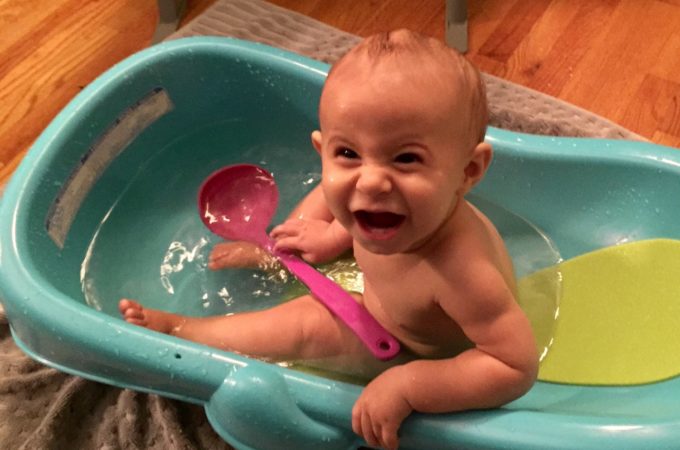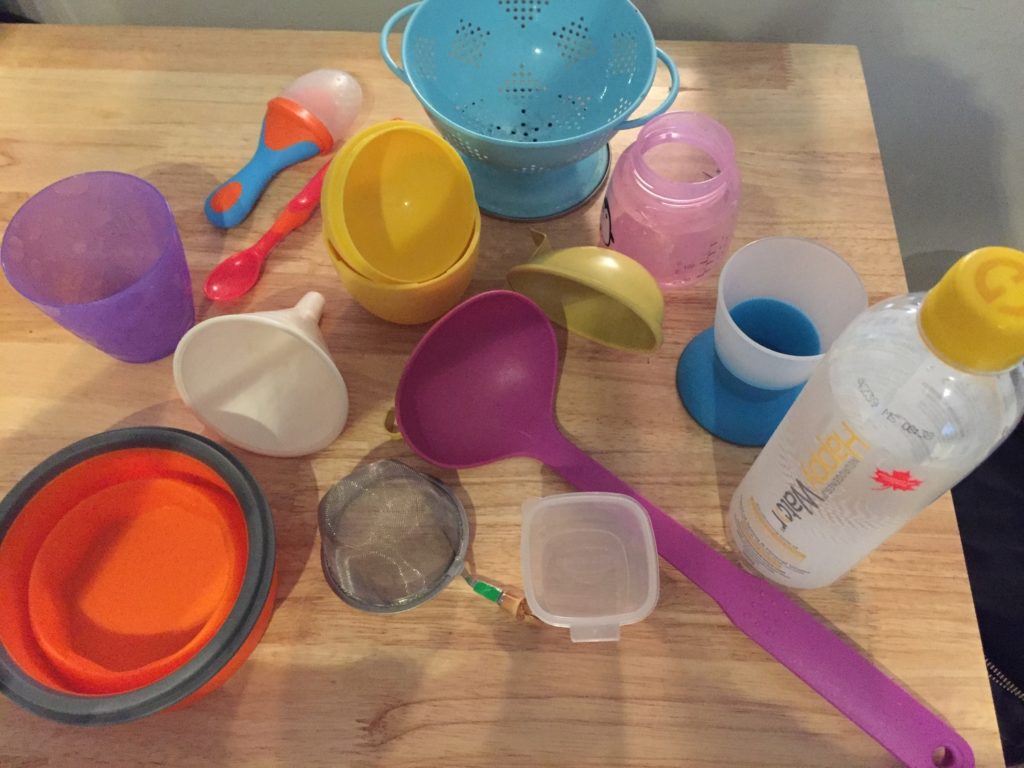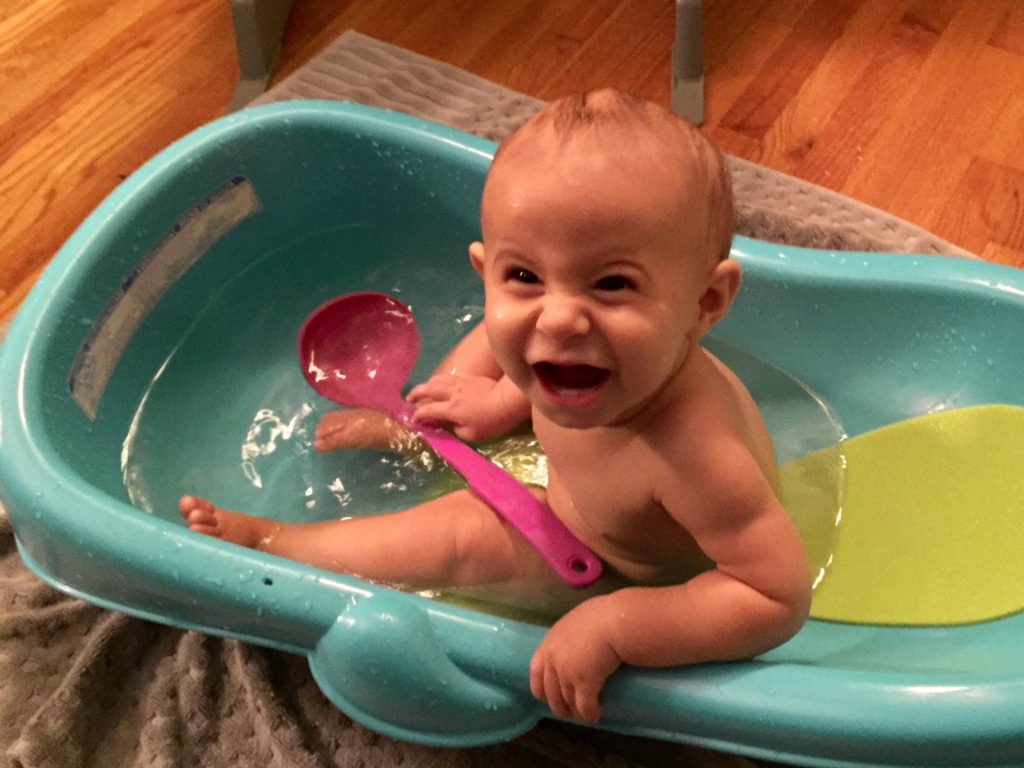Yes we said ‘Soup Ladle’.
Last week we talked about some of the benefits of using music during bath time. This week, we’re going to talk about how you can use objects you probably already have in your kitchen as toys during bath time to work on different aspects of child development, and keep you both engaged by changing things up.
Plastic containers! You might be using cups to scoop and pour water during bath time but what about – Soup ladles – Bowls – Water bottles – storage containers – a sieve – funnels or plastic salt and pepper shakers. You don’t need fancy toys to make bath time playful. There are a number of items laying around your house that can be great bath time toys! Here are some examples of what you can do with the different containers you find. Some you are likely already doing – others might be new!
- Scoop and pour water in your baby’s line of vision or from different heights (ranging from slightly above the water level to just above eye level). The water pours differently depending on the item you use.
- Pour water on to different body parts e.g. on your own hands, on your baby’s hands or feet etc.
- You can tap the items or bang them together like drums.
- If you have a container that has a lid you can put some water inside and shake it up listening to the sounds and watching the water move around inside.
- Push the items underwater then let go (if they don’t fill with water they will pop up to the surface – which can be quite fun for our little ones to watch).
- Scoop water with a funnel, block the hole with your finger and then alternate covering the hole with your finger and letting the water flow.
As you are doing these simple actions you are supporting communication development by:
- Letting your baby explore the items. When he looks, feels, shakes and even tries to eat the items, he is learning about the characteristics and details of the item he is playing with (e.g. Is it hard, squishy, heavy, does it make noise when I bang on it? etc.).
- Positioning yourself so you are face to face with your baby so he can watch your facial expressions and watch your mouth moving as you speak.
- Talking about what you are doing (modelling verbs).
- Examples: scoop, pour, go, up, down, fill it up, empty the cup, putting water in the bowl; bang; tap the cup; etc.
- Describing toys in the bath (modelling nouns and adjectives).
- Examples: warm water; blue cup; two cups; I have a big spoon; Look, there’s a hole in the cup; it feels heavy; this bowl is bumpy etc.
You are also working on social emotional skills and continuing to strengthen your relationship with your baby while:
- Being attentive and responsive to your baby during bath time.
- Sharing and enjoying these playful moments together.
Physical development is being supported when you:
- Support your child’s ability to come up with new ideas (ideation). Show your child that the same item can be used in many different ways (e.g. A cup can be used to scoop water; pour water; can be used as a drum; you can put soap inside the cup; you can put other cups inside the cup, etc.).
- Pour water slightly above your child’s eye level so he can watch by doing this you are supporting his core and neck strength.
- Give your child an item to hold in each hand and encourage that he bang the items together using both arms at the same time. (You may have to model this for your baby – holding items and banging them together yourself.)
- Encourage your child to take part in exploring the different items, feeling the different textures, holding the items that could be slightly heavy when filled with water, then holding them again when the water has been emptied etc.
What are some favourite toys your baby likes to play with during bath time?
—
Amanda & Eunice




